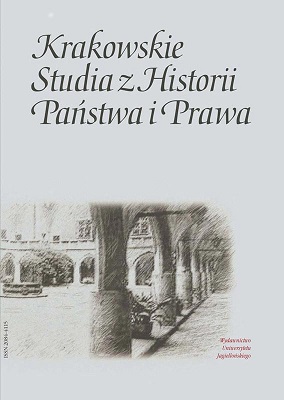Caesaropapism and the Reality of the 4th–5th Century Roman Empire
Caesaropapism and the Reality of the 4th–5th Century Roman Empire
Author(s): Rafal MarekSubject(s): Christian Theology and Religion, History of Law, Constitutional Law, Ancient World, Government/Political systems, Politics and religion
Published by: Wydawnictwo Uniwersytetu Jagiellońskiego
Keywords: secular and ecclesiastical power; Church and the Roman Empire; papal primacy in the Antiquity; caesaropapism;
Summary/Abstract: The relationships between the secular authorities and the ecclesiastical hierarchy in the Roman Empire of the discussed epoch do not follow the simple pattern known as “caesaropapism” or other similar models of sovereign’s supremacy over the church hierarchy within the “State church”. The reality was much more complex then, since a new model, known as “symphony” began to develop. The notion of “symphony” should be understood as a kind of close cooperation of both powers within the uniform Christian society. Popes strongly affi rmed the primacy of Rome within the church. At that time the theory of Pope Gelasius and the doctrine of St. Augustine played a prominent role. Nevertheless, these ideas were not widely received in the East. Later on, the Gelasian and Augustinian theories begun to be studied and appreciated in the scholastic milieu, where the new model of the relationship between the secular and papal power was developing.
Journal: Krakowskie Studia z Historii Państwa i Prawa
- Issue Year: 9/2016
- Issue No: S.
- Page Range: 1-27
- Page Count: 27
- Language: English

